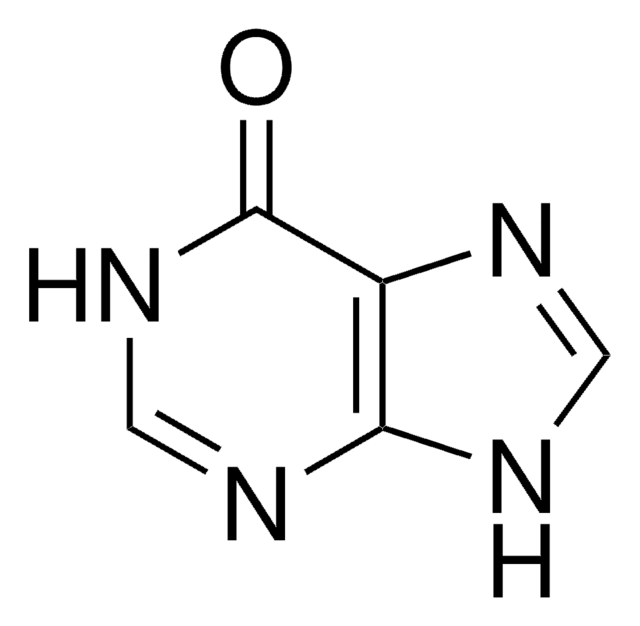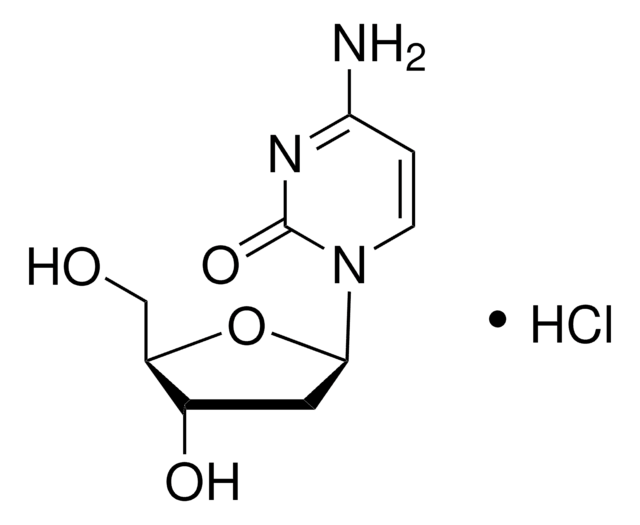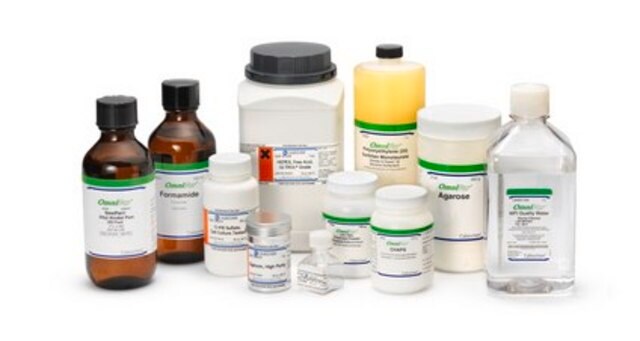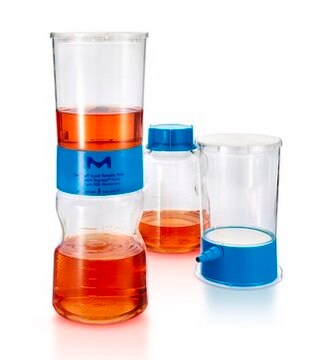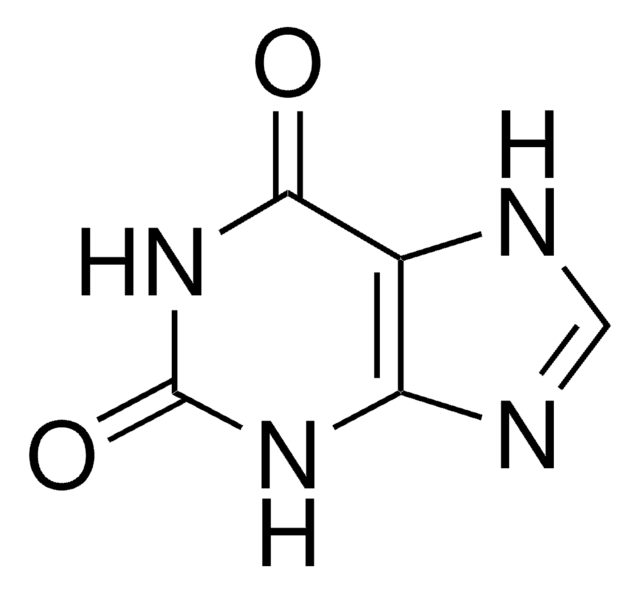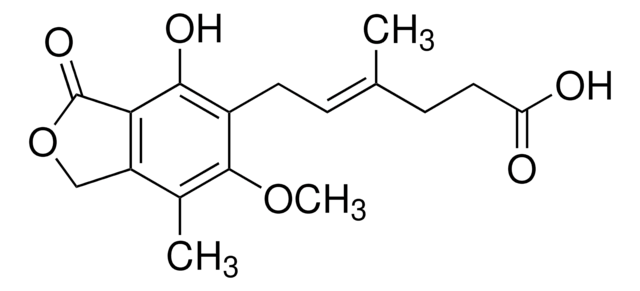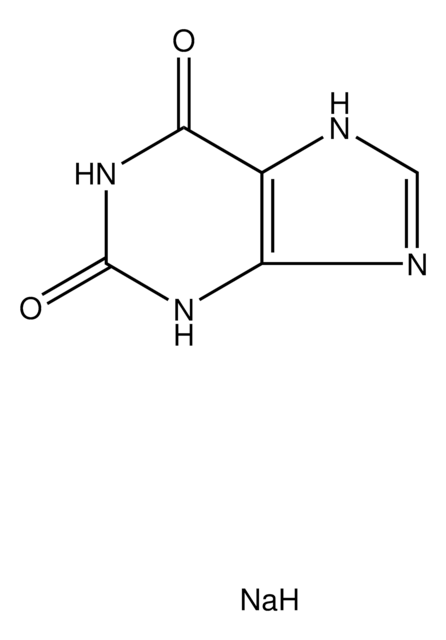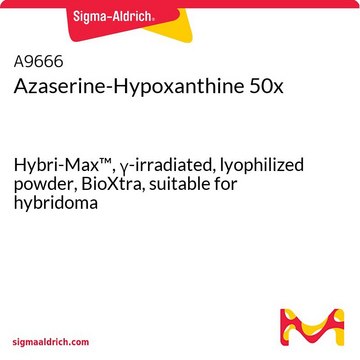H9636
Hypoxanthine
powder, suitable for cell culture, BioReagent
Synonym(s):
6-Hydroxypurine
About This Item
Recommended Products
product name
Hypoxanthine, powder, BioReagent, suitable for cell culture
product line
BioReagent
Quality Level
assay
≥99%
form
powder
technique(s)
cell culture | mammalian: suitable
mp
>300 °C (lit.)
solubility
formic acid: water (2:1): 50 mg/mL
SMILES string
O=C1NC=Nc2nc[nH]c12
InChI
1S/C5H4N4O/c10-5-3-4(7-1-6-3)8-2-9-5/h1-2H,(H2,6,7,8,9,10)
InChI key
FDGQSTZJBFJUBT-UHFFFAOYSA-N
Looking for similar products? Visit Product Comparison Guide
General description
Application
- as a supplement in HEPES (4-(2-hydroxyethyl)-1-piperazineethanesulfonic acid) -buffered Roswell park memorial institute (RPMI) to culture Plasmodium falciparum strain IT/FCR3
- in the preparation of Dulbecco′s modified eagle′s medium (DMEM) + MXH for the selection of chimeric modified vaccinia virus ankara (MVA)
- to generate superoxide anions
- to prepare hybridoma selection and maintenance media.
Biochem/physiol Actions
Storage Class
11 - Combustible Solids
wgk_germany
WGK 3
flash_point_f
Not applicable
flash_point_c
Not applicable
ppe
Eyeshields, Gloves, type N95 (US)
Certificates of Analysis (COA)
Search for Certificates of Analysis (COA) by entering the products Lot/Batch Number. Lot and Batch Numbers can be found on a product’s label following the words ‘Lot’ or ‘Batch’.
Already Own This Product?
Find documentation for the products that you have recently purchased in the Document Library.
Customers Also Viewed
Articles
Uric acid is not a direct additive to any of the classical cell culture media. However, it is present in animal sera. Consequently, uric acid is typically present in complete serum-supplemented classical cell culture systems.
Our team of scientists has experience in all areas of research including Life Science, Material Science, Chemical Synthesis, Chromatography, Analytical and many others.
Contact Technical Service
